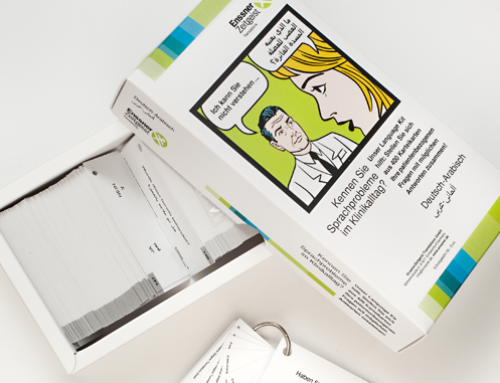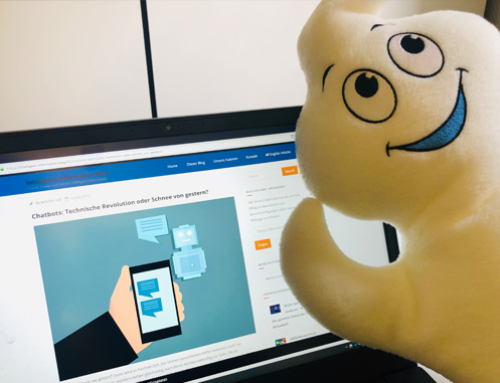Translation-oriented writing
Saves time and money!
Saves time and money!
Texts are no longer only used in their source language, but also serve as a basis for translations into different languages. Therefore, the topic of translation-oriented, comprehensible and consistent writing is very important. Quite a bit can already be done when creating the source document, to influence the preparation work for translation using translation memory systems and ensure faster turnaround times and reusability.
Formatting
- The layout should leave enough space for the translated text, which is in most cases longer. Languages such as French, Spanish, Portuguese and Italian, but also Polish, Russian, Croatian, Serbian, etc., for example, end up considerably longer compared to the same English content. Therefore, in many cases the translated text may not fit exactly into the existing layout.
- Text on images such as jpg, png and tiff should be avoided as it is not automatically extracted for translation. When generating the content to be translated, InDesign, Word etc. should be used and not the text functions in graphics applications such as Adobe Illustrator or Photoshop. The graphics application should only be used for visual content.
- The correct segmenting in the translation environment is related to the formatting of the source documents. A hard line break should only be used if it is actually the start of a new paragraph. The line break is interpreted by the CAT tool as the end of a segment and leads to incorrect segmentation. A soft or a manual line break is not recognised by default as the end of a segment. Manual and soft line breaks have to be reworked by hand before the translation .
- Manual formatting during layout should be reduced to a minimum and format templates should be used instead. Text indents should not be made using spaces or tab characters, but with the help of automatic indenting styles if possible.
- Whenever possible, open formats should be embedded in the main document, because in most cases they can be imported into the translation editor.
- Tabular structures should be created as a table and not by using spaces or tabs.
Writing rules
Understandable texts are easier to translate. No matter whether they are being translated by humans or a machine . In practice, translators often have to read texts several times to understand their meaning and translate them. In the case of of inconsistently used terms, synonyms, etc. translators have to ask questions to understand the meaning. The same applies to unclear instructions. Handling queries costs companies time and money. Failure to reply to queries entails the risk that translations may be incorrect in content or do not comply with the company’s wording . In both cases , extensive correction loops are subsequently required, which prolong the translation process and increase costs.
One of the reasons for poor translatability is that texts are often written by several people. These are often “occasional editors” or “editors against their will”, as they actually have other roles in the company. They often lack knowledge of what is important for translation-oriented writing. A widespread misconception is that the authors of texts assume and presume that every reader or translator is familiar with the company’s topics, products and language. The result is extremely long and complicated sentences with superfluous filler words, unknown abbreviations, synonyms, unclear references or several instructions per sentence.
Tips and support measures:
- Use uniform and simple sentence structures (subject – verb – object)
- Keep to a logical order
- Form relatively short sentences with a subordinate clause (10-15 words)
- Use unambiguous terms (not just “device”, but “measuring instrument”)
- Use official abbreviations
- Formulate statements uniformly (do not combine an infinitive and imperative)
- Explain abbreviations and new technical terms
- Avoid synonyms and ambiguous terms
- Do not use filler words (such as “now”, “but”…)
- Style guides for source texts
- Raise awareness and train editors
- Proofread the text
Terminology
The use of the terminology preferred by the company or corporate wording is a frequent reason for complaints in translations. Often the customer assumes that the reason for this is the translator’s lack of specialist knowledge. However, if you look at the source texts, you often find that even the different people who write texts in a company (editors, product managers, developers, marketing staff, etc.) use different terminology for one and the same concept.
A company’s employees may understand the terms “temperature sensor”, “temperature probe” and “temperature probe” to all be the same. The translator, however, wonders whether different concepts are really meant here, for which different translations must be chosen in the respective language.
The inconsistent use of terms does not only occur with different people or divisions in a company. Sometimes different terms are even used for the same concept or object within the same text. Other aspects related to terminology are the comprehensibility of terms and different spellings.
Different spellings of technical terms mean that a sentence is not recognised as an exact match. It is also often the cause of inconsistent translations.
Tips and support measures:
- Systematic terminology work
- Terminology check
- Proofread the text
Non-translatable texts
Many documents contain content that does not require translation. These vary depending on the type of document.
Product & proper names
Often product and proper names are not to be translated. However, these are not always recognisable as such to the translator or the translator does not know whether to translate or adapt them. To mark these texts for the translator as not to be translated, product and proper names can be provided with special formatting or labelling. The texts marked in this way can then be automatically protected by translation tools so that they cannot be edited by the translator.
Placeholders, variables and codes
Placeholder, variables and codes are typical for software texts. Expressions like %1, $2, ERROR_TYPE, <script> etc. must not be changed in the translation. However, these can be edited in translation tools by default. If placeholders or variables are changed during the translation, this can lead to malfunctions in the software. Depending on the size of the software and volume of the texts, these errors are difficult to find afterwards. With the help of a list of placeholders, variables and codes or description of the text samples on which it is based, the translation tool can be set up in such a way that the expressions are protected and are not taken into account for the price calculation. In addition, translation tools can then automatically check these expressions to ensure that they are correctly used in the translation.
Foreign language texts
If the documents are created in multiple languages, is must be ensured that the content in different languages can be distinguished. If this is not the case, translation tools cannot automatically detect them. When determining the amount of text and preparing the quote, the texts are then either counted or must be laboriously excluded manually beforehand. This leads to additional work and costs for file preparation.
Tips and support measures:
- Train editors, graphic designers and developers
- Style guides for translators
Have we sparked your interest?
Simply contact us if you would like to know more.
Marija Sperlich
Phone: +49 (0)9721 7035-19
marija.sperlich@enssner.de
EnssnerZeitgeist
Translations GmbH
97421 Schweinfurt, Germany






